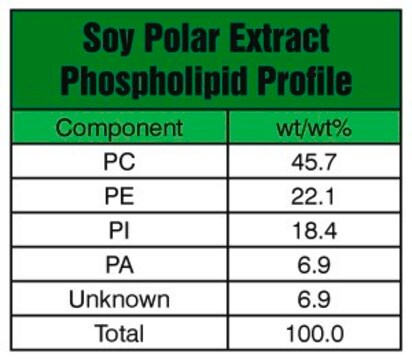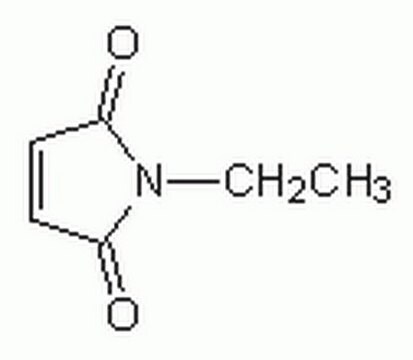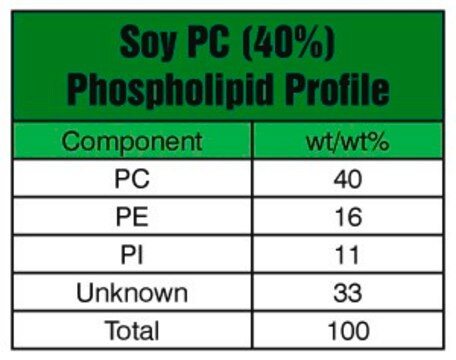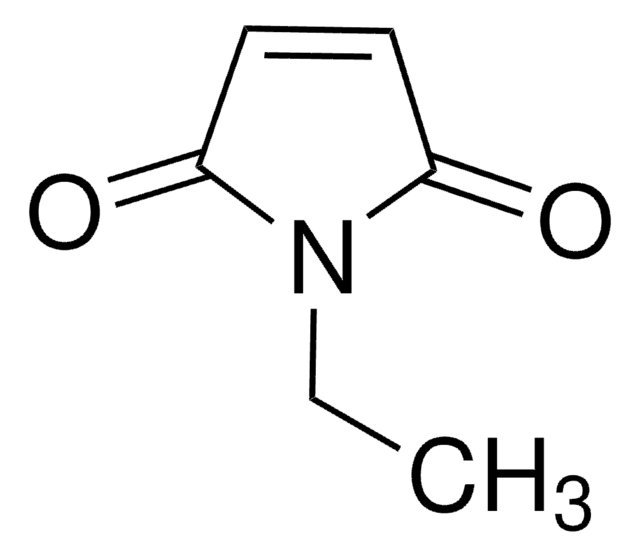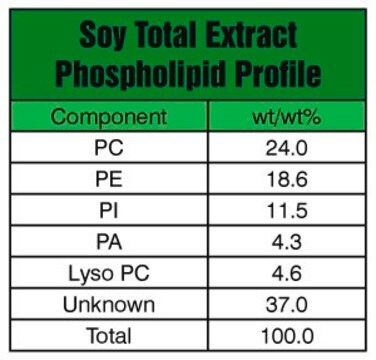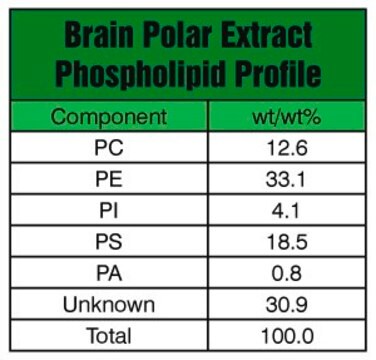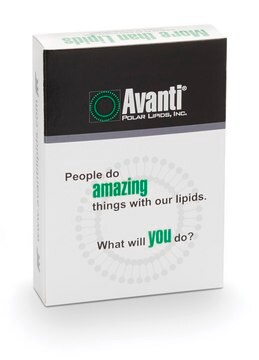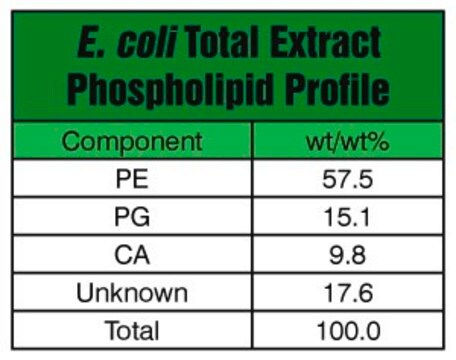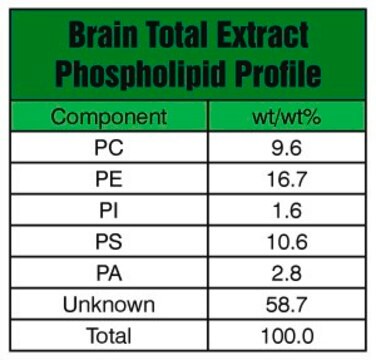541602C
Avanti
Soy Extract Polar
Avanti Research™ - A Croda Brand
Synonym(e):
Soybean Polar Lipid Extract
About This Item
Empfohlene Produkte
Form
chloroform solution
Verpackung
pkg of 2 × 20 mL (541602C-1g)
pkg of 1 × 4 mL (541602C-100mg)
pkg of 5 × 4 mL (541602C-500mg)
Hersteller/Markenname
Avanti Research™ - A Croda Brand
Konzentration
25 mg/mL (541602C-100mg)
25 mg/mL (541602C-1g)
25 mg/mL (541602C-500mg)
Lipid-Typ
lipid extracts
Versandbedingung
dry ice
Lagertemp.
−20°C
Verwandte Kategorien
Allgemeine Beschreibung
Anwendung
- in the preparation of liposomes for forester resonance energy transfer (FRET)-based assay
- along with 1,2-dioleoyl-sn-glycero-3-phospho-L-serine (sodium salt) (DOPS) to mimic the cell membrane inner leaflet and for the preparation of giant unilamellar vesicle (GUV) connected to a multilamellar vesicle (MLV)
- in liposome preparation for the generation of GUV-MLV reservoirs
Biochem./physiol. Wirkung
Verpackung
Rechtliche Hinweise
Signalwort
Danger
Gefahreneinstufungen
Acute Tox. 3 Inhalation - Acute Tox. 4 Oral - Aquatic Chronic 3 - Carc. 2 - Eye Irrit. 2 - Repr. 2 - Skin Irrit. 2 - STOT RE 1 - STOT SE 3
Zielorgane
Central nervous system, Liver,Kidney
Lagerklassenschlüssel
6.1D - Non-combustible acute toxic Cat.3 / toxic hazardous materials or hazardous materials causing chronic effects
WGK
WGK 3
Flammpunkt (°F)
does not flash
Flammpunkt (°C)
does not flash
Zulassungslistungen
Zulassungslistungen werden hauptsächlich für chemische Produkte erstellt. Für nicht-chemische Produkte können hier nur begrenzte Angaben gemacht werden. Kein Eintrag bedeutet, dass keine der Komponenten gelistet ist. Es liegt in der Verantwortung des Benutzers, die sichere und legale Verwendung des Produkts zu gewährleisten.
EU REACH Annex XVII (Restriction List)
Hier finden Sie alle aktuellen Versionen:
Analysenzertifikate (COA)
It looks like we've run into a problem, but you can still download Certificates of Analysis from our Dokumente section.
Wenn Sie Hilfe benötigen, wenden Sie sich bitte an Kundensupport
Besitzen Sie dieses Produkt bereits?
In der Dokumentenbibliothek finden Sie die Dokumentation zu den Produkten, die Sie kürzlich erworben haben.
Kunden haben sich ebenfalls angesehen
Unser Team von Wissenschaftlern verfügt über Erfahrung in allen Forschungsbereichen einschließlich Life Science, Materialwissenschaften, chemischer Synthese, Chromatographie, Analytik und vielen mehr..
Setzen Sie sich mit dem technischen Dienst in Verbindung.